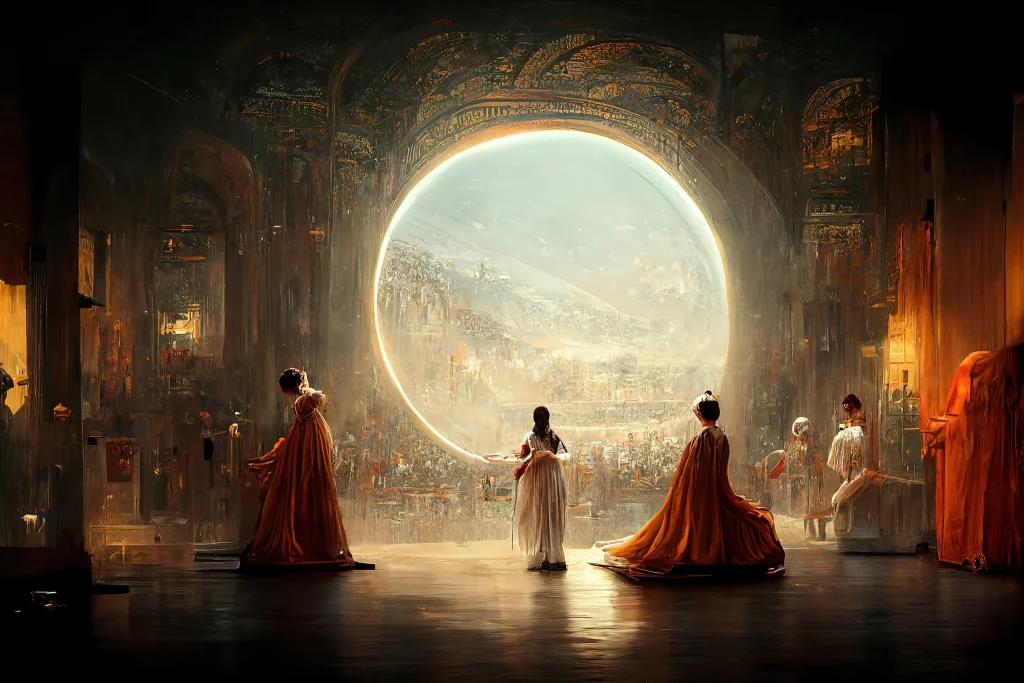The introduction of AI-generated images on DeviantArt, a popular online platform for artists, has ignited a heated debate within the artistic community. With the site’s recent announcement that users must disclose whether their works were created using AI tools, discussions surrounding art, creativity, and profit have intensified. The controversy highlights the challenges of defining art, determining its creators, and protecting artistic livelihoods in the age of AI.
AI and the Artistic Community
DeviantArt, known as a platform that helped launch the careers of many artists, has recently faced criticism due to what some users describe as an influx of “AI crap.” The site’s decision to label AI-generated images follows a similar move by Google and an urge from the European Union for tech platforms to adopt such practices. The reasoning behind labeling AI-generated images revolves around the potential spread of misinformation, especially during news events or elections.
Ethical Concerns and Artistic Integrity
One of the primary concerns raised by artists like RJ Palmer, a successful digital artist, is the way AI generators were developed. Many of these programs were trained on the LAION dataset, which allegedly contained images scraped without permission from DeviantArt. The unauthorised use of artists’ work has led to legal actions and a sense of betrayal within the artistic community. Furthermore, DeviantArt’s own AI image generator, DreamUp, faced backlash for including users’ creations in its dataset without explicit consent.
Impact on Artistic Community and Creativity
The influx of low-quality AI-generated images on DeviantArt has resulted in frustration among artists who feel their work is being overshadowed. The platform’s homepage and search features are flooded with AI-generated content, often lacking proper labelling. This raises concerns about the devaluation of art and the loss of the vibrant artistic community that once thrived on DeviantArt. Additionally, the replication of artists’ styles by AI poses a potential threat to their artistic identity and future viability.
Copyright Challenges and AI Creators
The US Copyright Office’s stance that only “human-authored” works are eligible for copyright protection has sparked debates over the legal recognition of AI-generated images. While some argue that AI tools are just another creative tool and should be protected, others contend that the human element and the artist’s intention should be central to copyright considerations. The challenge lies in striking a balance that acknowledges the role of AI while ensuring the protection of artists’ intellectual property.
Blurry Lines and Labeling Challenges
Determining how to effectively label AI-generated images presents its own set of challenges. User reporting may be unreliable, and automated detection systems may produce false positives or false negatives. The dilemma extends to what degree AI processing can be present before an image is considered AI-generated. The use of AI in various aspects of digital photography and image editing blurs the lines further, making it difficult to define what constitutes AI-generated content.
The Future of AI in Art
Despite the controversies surrounding AI-generated images, some experts believe that the threat to artists’ creativity and individuality will eventually subside. The loss of artistic identity and control associated with the use of AI tools may drive artists back to more traditional methods. Ultimately, the artistic community will recognise the unique value that human creativity brings to the art world, leading to a reevaluation of the significance of AI-generated works.
Conclusion
DeviantArt’s decision to label AI-generated images has sparked a fierce debate within the artistic community, highlighting ethical concerns, copyright issues, and the impact on artistic integrity. The challenges of defining art, determining authorship, and protecting artists’ livelihoods in the age of AI require careful consideration. As the art world grapples with these complex questions, it is crucial to strike a balance that values human creativity while acknowledging the role of AI as a creative tool. Only through thoughtful dialogue and collaboration can the artistic community navigate the evolving landscape of art and technology.
Feature Image: Théâtre d’Opéra Spatial, an AI-generated image that won first place at the Colorado State Fair annual art competition last year. Courtesy:JASON M. ALLEN
AI Replacing Artist? The First Artificial Intelligence-Generated Statue Arrived in Swedish Museum.

Contributor





